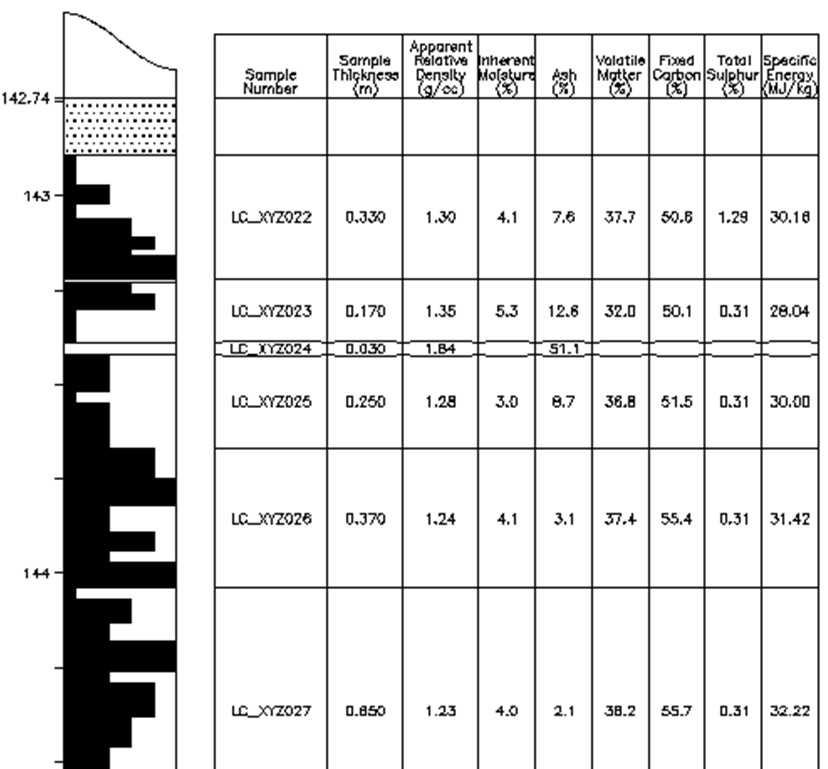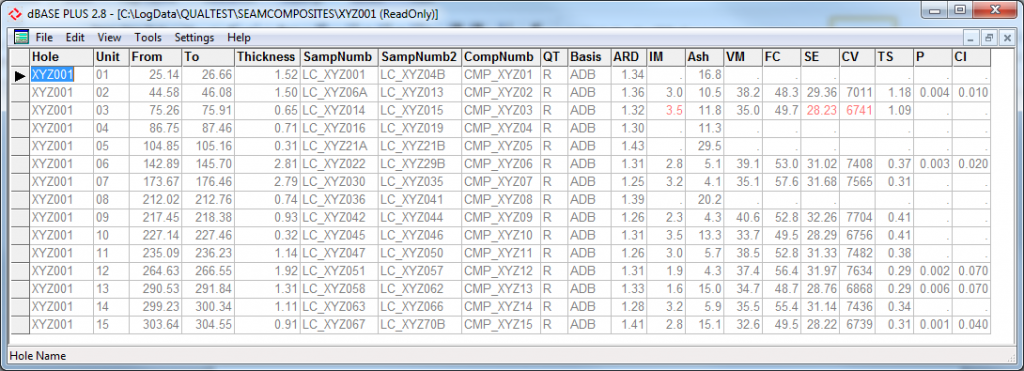LogCheck
LogCheck forms the basic coal evaluation system as developed by geocheck. More recently a small manipulation tool called LASManager has been developed to be able to make you LAS data consistent across a project or company system.
LogCheck has four modules:
- Basic
module
- Headers, Geology, LAS, Cementing, Drilling, Geologists, PointLoads, WaterFlows, Basic Coal Quality ONLY
- Geotechnical
module
- Uses the Defects data to plot the geotechnical detail as recorded from the drill hole for the design of both opencut and underground operations
- Graphical
Editor module
- Works with LAS data to graphically enable the user to “adjust” Geology depths to align with LAS depths
- Coal
Quality module
- All forms of Coal Quality data; for example – proximates, ultimates, composites, AFT, Ash analysis, maceral analysis, coking tests, sizing, float/sink analyses, stored and validated against “standard” CQ ranges of data, and then graphically plotted as required
LogCheck uses dBase as its relational database platform.
Logcheck software uses dBase code to manipulate the LogCheck data types and hence saves time as the database functionality is already developed in dBase. Oracle is an example of another database system which is quite expensive.
In order to run LogCheck one needs a dBase runtime engine to be loaded first. This is currently PlusRuntime-b2215_EN.exe which can be downloaded from the dbase web site.
dBase writes data as .dbf and .dbt files for data files like geology etc.
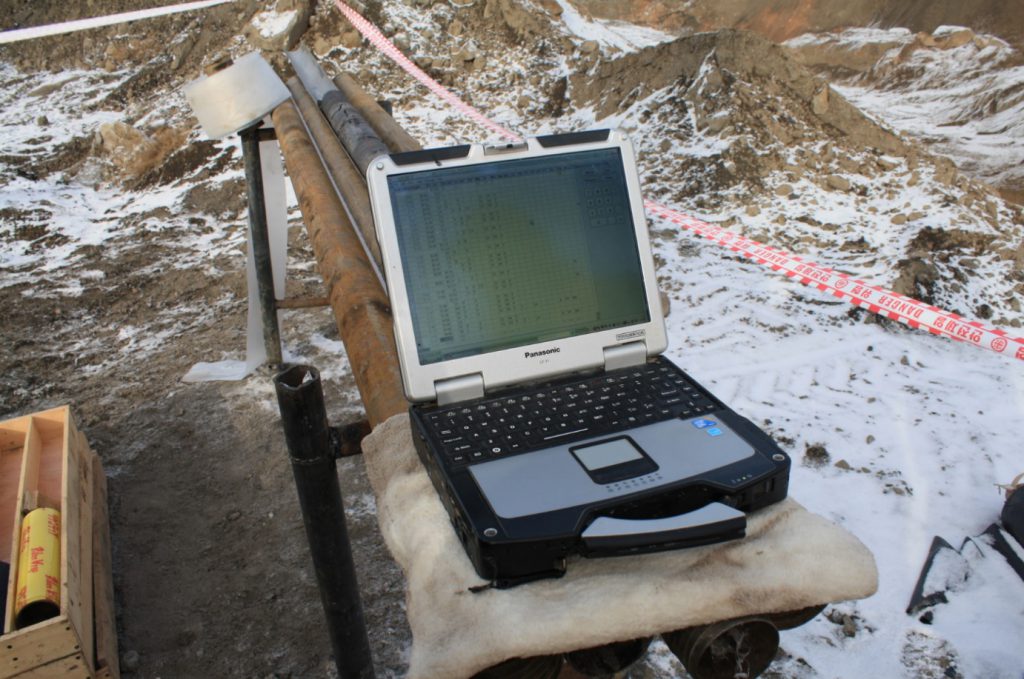
LogCheck is a Windows based software system for the management of coal exploration data. It includes facilities for:
- data entry, validation, plotting and production of English reports for hole header (location information), drilling, water flow, downhole geological and geotechnical (rock mass unit, defect and point load) data,
- plotting and geological log depth adjustment using downhole geophysical data,
- import and export of dictionaries and data to and from geological databases and modelling packages, such as Acquire, Geobank, MineScape (GDB), Vulcan, Minex and Englog,
- production of various audits and summaries, including summaries of: data currently stored for each hole; dictionary code usage; drilling meterage; seams, horizons and samples in each hole; contents of downhole geophysical (LAS) files; rock mass unit characteristics and point load indices.
- Compilation of detailed CQ data from various analytical bases into a linked database system that verifies the data entry, allows some manipulation of the coal data into composites over seams and then the export of this data for further modelling.
Freeware products to use with LogCheck:
- Trueview – Autocad software
- This allows you to view the dxf outputs from the graphical output of LogCheck general and Geotechnical Module
- Primo PDF
- Primo is a freeware pdf writer. This helps produce a pdf from the dxf graphical output.
- LAS certify software
- Allows you to check las files and see if they are matching the LAS standards
LogCheck DATA types
HEADER DATA
Header data consists of data for which there is only a single value for the entire hole. For example, the hole name, hole purpose, collar survey (easting, northing and elevation), total depth, geological logging organisation, etc
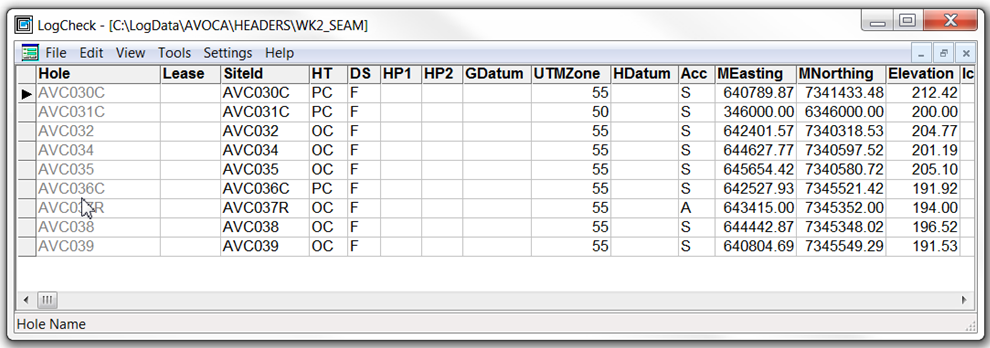
GEOLOGIST DATA
The Geologist data records the names of the geologist(s) who logged the hole, and what depth ranges they logged. The fields are Base Depth and Logging Geologist.
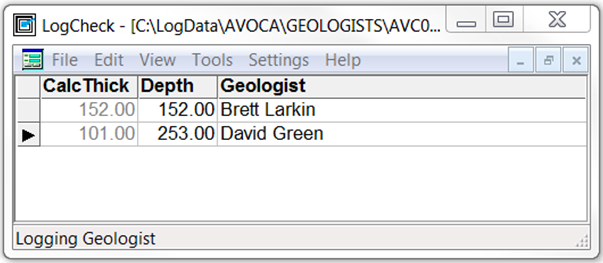
CASING DATA
The Casing data records the depth to which casing was run in the hole and the type of casing used, eg PVC, steel, steel threaded. Also the size of the casing used is recorded.
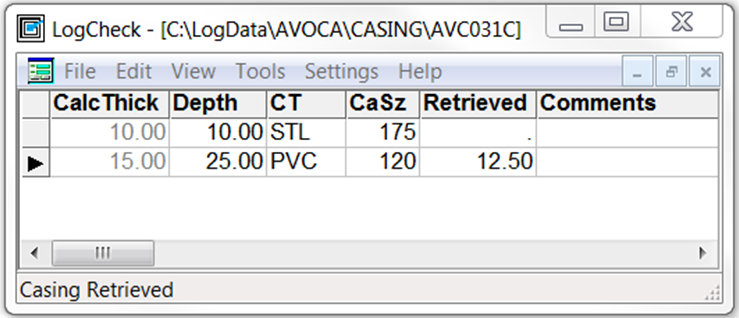
CEMENTING DATA
Volume of cement can be recorded for each hole.
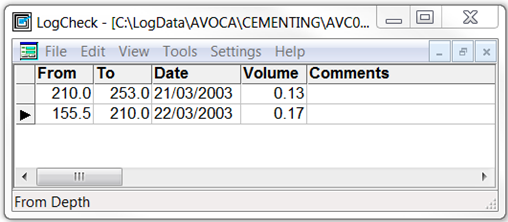
DRILLING DATA
For each hole, the drilling data can be recorded. The compulsory fields are Base Depth, Bit Type and for cored intervals, the Core Size.

GEOLOGY DATA
Geology data stores calculated thickness, Interval base depth, Sample Number, Seam/strat name, Lithotype, % lithotype, Comments, etc
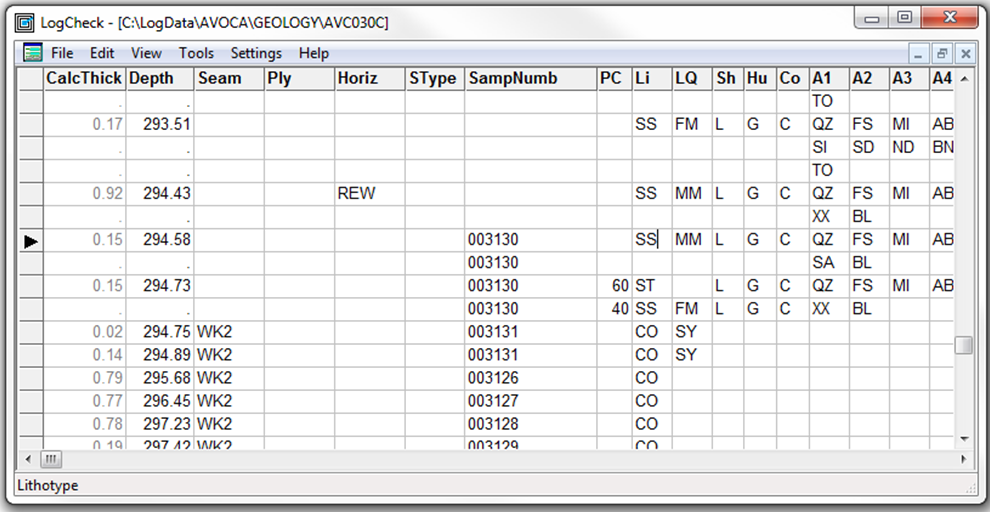
LAS DATA
The LAS file records geophysical data obtained from logging a hole, such as gamma, density and caliper recordings.
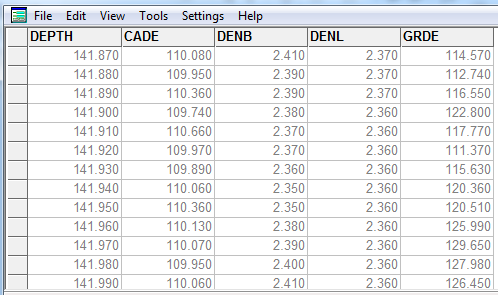
DEFECT DATA
Defect data in LogCheck, has two parts– on the left hand side, from the Depth column up to but not including the Defect column, are Rock Mass Unit (RMU) details. A single RMU has uniform geotechnical characteristics. It is a broader grouping than just a single lithology and will often consist of multiple lithology units. On the right hand side, from the Defect column on, is a description of each of the defects.

POINT LOAD TEST DATA
In a point load test, a stick of core is subject to compressive forces in either an axial (along the axis of the core) or diametral (across the core) directions, until the core fails. The force measured is the force in kN at which the core fails.

WATER FLOW DATA
Water flow is flow out of the hole from particular depths on a particular date
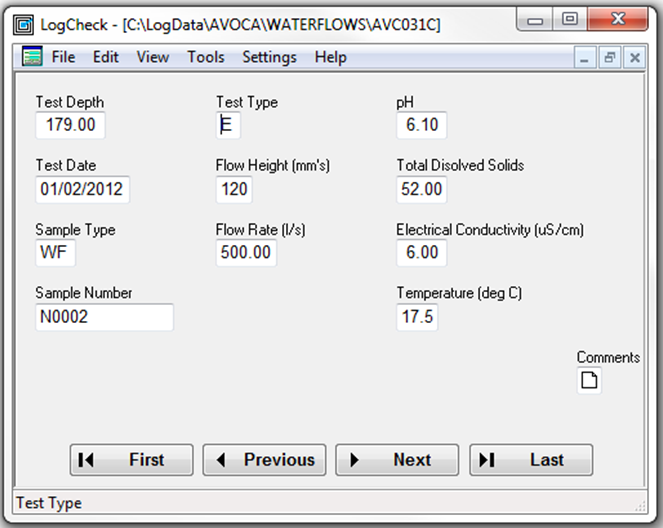
LogCheck Features
DATA ENTRY AND EDITING
LogCheck supports a number of widely used data sheet formats or can be tailored to match the client’s specific needs. Data can be imported from Geobank, Acquire, MineScape (GDB), Vulcan, Minex, Excel .csv or Englog text files or entered directly.
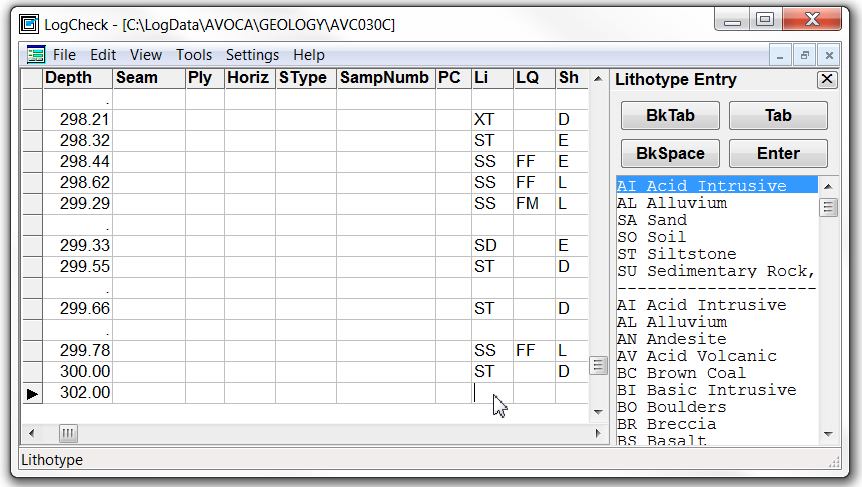
DATA LISTING
Data can be listed in its original format or as reports with codes converted to full English descriptions. In either case, the listings can be produced either as PDF’s or text files for importing to other software such as Excel or Word.
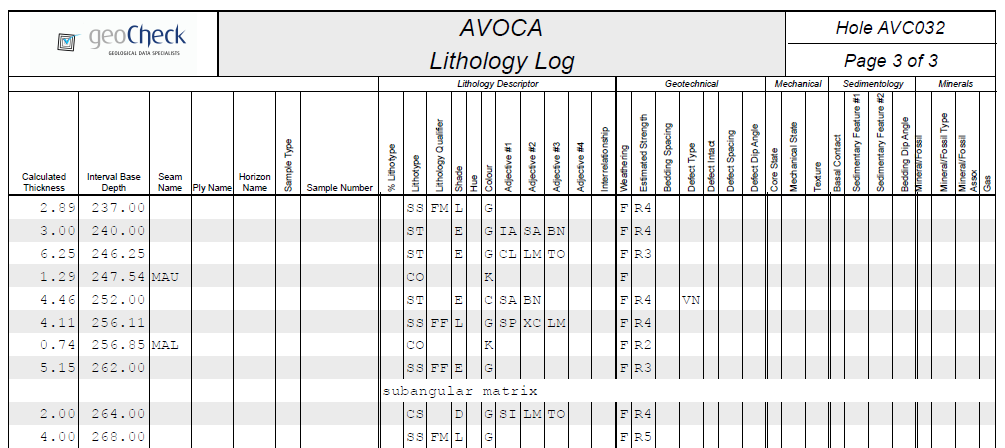
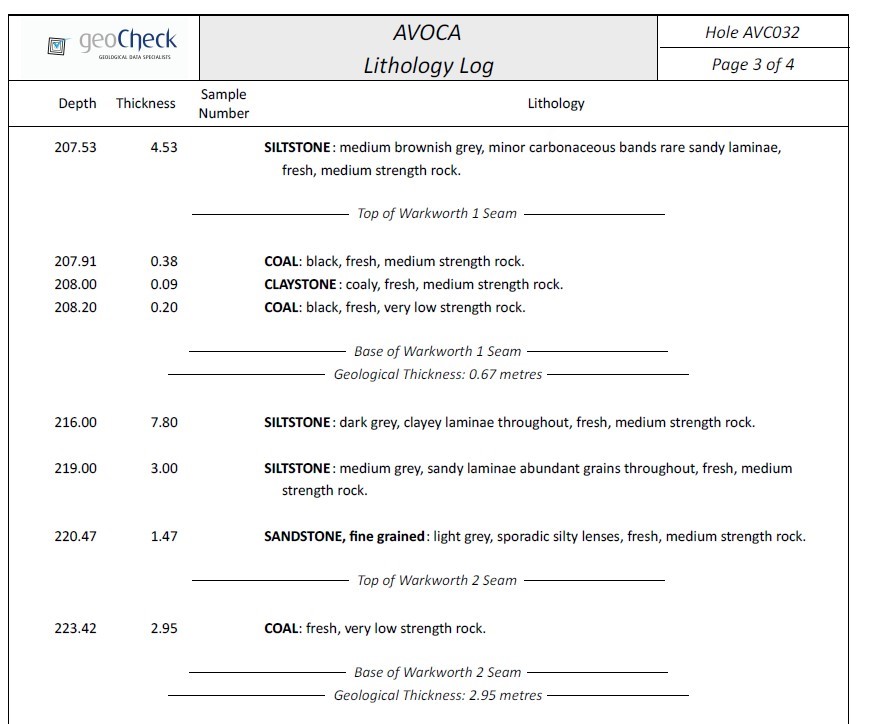
GRAPHICAL EDITING
The Graphical Editor (GeoEdit) is used for graphically displaying hole data, and aligning depths of lithologies with the downhole geophysics. GeoEdit reads data from a hole log generated from LogCheck, and displays the lithology, seam, ply, sample number, mechanical state and geophysics in a graphical format.
DATA PLOTING
Plots are generated as industry standard .dxf files which can be displayed, edited and/or plotted from nearly any CAD package.
There are four type of plot that produced by LogCheck: Drillhole Location, down hole plots, histogram, and box and whisker plots.
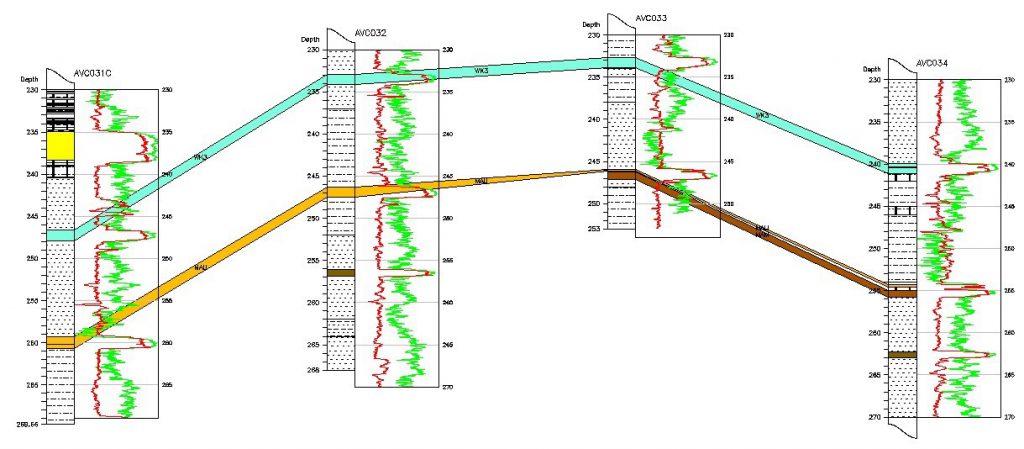
COAL QUALITY
The coal quality features in LogCheck have been dramatically extended from earlier versions. It now has facilities for recording Coal Quality data not only for raw samples but also for various mesh sizes and float fractions. It also now includes facilities for recording results for both individual and combined ply composites. The variables that can now be recorded include:
- Basic Properties: Relative Density, Moisture, Ash, Volatile Matter, Fixed Carbon, Energy, Total Sulphur, Phosphorus, Chlorine, Crucible Swell No. (CSN) and Hardgrove Grindability (HGI).
- Ultimates & Sulphurs
- Major Trace Elements
- Minor Trace Elements
- Macerals & Reflectances
- Thermal Coal Properties
- Coking Coal Properties
LogCheck also determines composite values for each Seam, Ply or each Seam + Ply combination. The user can control whether this is done by calculating them from the individual ply data, using analysed composite values or for each of the variables within each composite use the analysed composite value.

